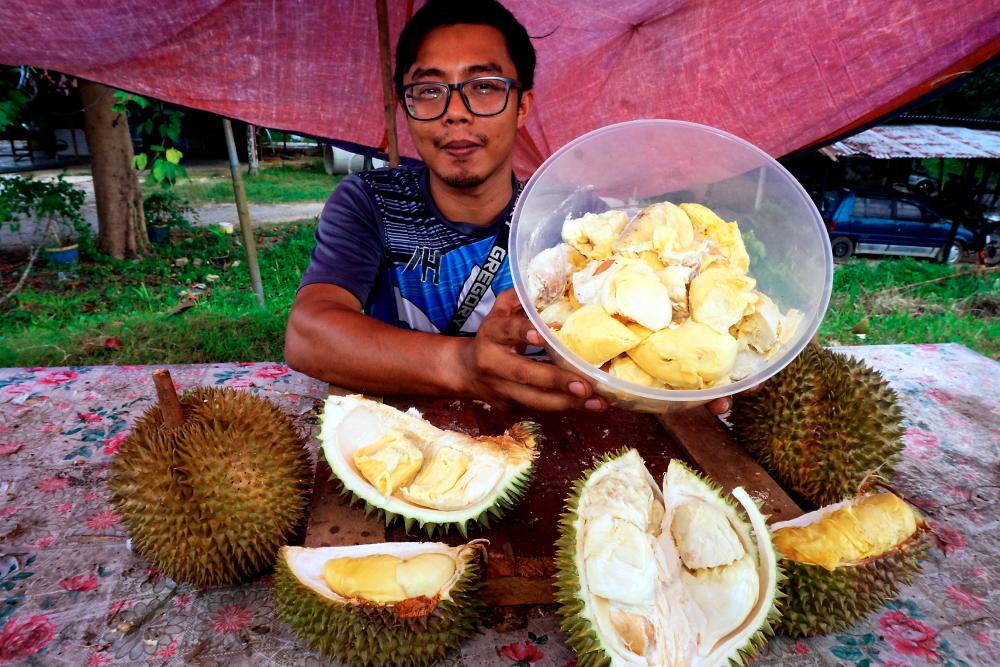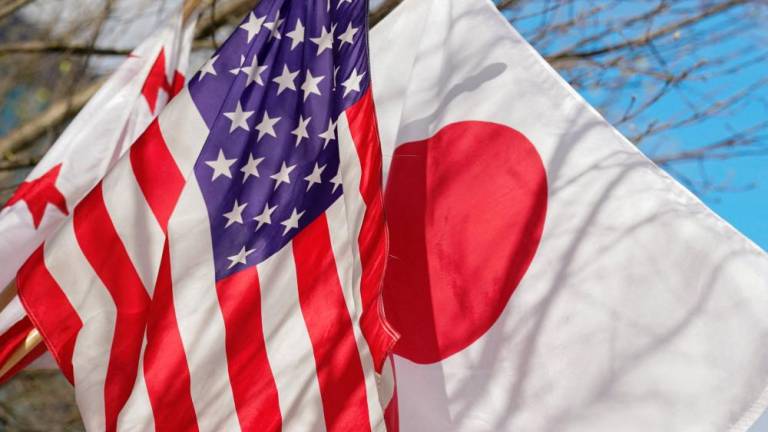By JEFF YONG
I AM taking on a new vocation this week: I’ve become a tour guide to my cousin from Hainan in southern China who is visiting with his family.
Given that he treated me well when I was there some years ago, the principle of reciprocity must apply here.
I’ve racked my brains as to how I should make his trip as pleasant as possible. At times, I shudder as to what is right, acceptable and doable.
But since the durian season is now in full swing in Malaysia, I’ve tapped the knowledge of my comrade Lee Weng Poon, a noted toastmaster from Bukit Mertajam, on how to ‘drown’ my relatives in ‘heavenly custard’, which is usually very expensive in China.
It’s only right since my cousin’s family have come to the home of the world’s yummiest durians!
Thank heavens, I’m supported by the bumper crop this time around. Make-shift stalls have sprouted at almost every street corner due to this season’s “durian runtuh”.
Since durian-lovers in China are mostly familiar with the Musang King – a variety associated with a bittersweet taste and creamy texture – I now have the liberty to introduce them to other varieties.
My attention was drawn to the emergence of ‘or chi’, or Black Thorn in the Hokkien or Teochew dialects.
Its aficionados claim that it tastes even better than ‘Raja Kunyit’, the other name for Musang King, because its orangey flesh is tender, thick and sweet.
Other than the two varieties named, I must admit that my knowledge of speciality durians is limited to five other types – ‘Kucing Tidur’ or Sleeping Cat, ‘Ang Heh’ or Red Prawn, ‘Chuk Keok’ or Bamboo Leg, D24 and XO.
There are also the kampung varieties and the not-so-tasty red-coloured ones from Borneo.
I’m keen to find out more about different clones like the Golden Phoenix, Black Pearl, D1, D13, D88 and D101.
Perhaps the authorities should consider giving names to those varieties that now only have letters and numbers, for promotional purposes.
Would the Musang King be so well-known if it was known only by its clone number of D197 that has been registered under the National Registrar of Varieties in the Agriculture Ministry?
I doubt it would have gotten the tremendous response it has been getting, especially in China, where it is known as ‘mao shang wang’ or Cat Mountain King!
Durians are said to be seasonal fruits. But because they don’t fruit all at the same time, those lucky enough to be living in the Klang Valley often get to consume them all the year round, save for a few days when the supply trickles to a halt.
Two places that I know where you can get these fruits almost any time of the year are SS2 in Petaling Jaya, and Cheras in Kuala Lumpur. I don’t know about the scene at Cheras, but I do know that the stalls at SS2 are quite reasonable in their pricing.
For me, a good experience at a durian stall is reasonable prices for the stuff you’re paying and having a trustworthy stallholder.
Sometimes, the price doesn’t match one’s taste satisfaction index. Some stalls do compensate you when their durians are below par, by giving you an extra fruit or shaving off the final price.
To avoid unpleasantness at durian stalls, some choose to buy durians in neat packets at supermarkets. I understand the situation.
They don’t want to be caught like the group of women in Penang recently who consumed two Black Thorns and one Musang King only to be told that the price tag was RM937!
They paid up, but one of them later blasted the stall in a Facebook posting! The women felt cheated somehow.
These are the challenges when one goes to an unfamiliar stall. To avoid such nonsense, some choose to indulge their gluttony at all-you-can-eat durian fests!
Jeff Yong, after making his mark in the twisty maze of mainstream journalism, has finally decided to enjoy what he does best – observing the unusual and recounting the gleeful. He can be contacted at lifestyle.borak@gmail.com.













